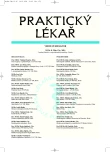Role of coronary calcium scoring in a spectrum of examination procedures
Význam koronárního kalciového skóre ve spektru vyšetřovacích metod
Kalciové skóre vytváří představu o vychytávání Ca++ iontů v aterosklerotických plátech koronárního řečiště. Obecně platí vztah: čím vyšší skóre, tím horší prognóza. Kalciové skóre může přispět k posouzení rizikovosti nemocných v rámci budoucích dopadů koronární nemoci. Může přispět ke stratifikaci rizika zejména u nemocných s kumulací známých rizikových faktorů aterosklerózy či dalšího vývoje koronární nemoci. Kalciové skóre může rovněž přispět k rozhodnutí o výběru dalších vyšetřovacích metod v kardiologii, zejména pak o indikaci ke koronární angiografii. Kalciové skóre pod 10 obvykle představuje minimální poškození koronárního řečiště bez jakéhokoli dalšího dopadu. Skóre nad 400 naopak dává představu o závažném stupni koronárních kalcifikací a téměř vždy představuje indikaci dalších vyšetření. V zásadě nerozhoduje, zda se hodnota tohoto skóre pohybuje kolem 400 či kolem libovolného vyššího čísla. U akutních stavů by kalciové skóre nemělo být používáno.
Klíčová slova:
kalciové skóre, počítačová tomografie, koronární nemoc, prognóza
Authors:
J. Šochman 1; D. Vedlich 2; Peregrin; J.h 2
Authors‘ workplace:
Klinika kardiologie, Institut klinické a experimentální medicíny, Praha Přednosta: prof. MUDr. J. Kautzner, CSc.
1; Základna radiodiagnostiky a intervenční radiologie, Institut klinické a experimentální medicíny, Praha Přednosta: Doc. MUDr. J. Peregrin, CSc.
2
Published in:
Prakt. Lék. 2006; 86(12): 714-717
Category:
Diagnostis
Overview
The calcium scoring system offers a particular view on the uptake, as well as the deposition, of calcium ions into coronary artery atherosclerotic plaques. It is generally true that the higher the score, the worse the prognosis. Coronary calcium scoring is helpful in evaluating the impact coronary artery disease will have on a patient’s health in the future. It also can contribute in patient risk stratification, particularly in patients with an accumulation of known atherosclerosis risk factors or further development of proven coronary artery disease. Finally, calcium scoring methods can influence the selection of further examination procedures in cardiology - primarily coronary artery angiography indication. Acalcium score of less than 10 usually represents a minimal coronary artery lesion without any further clinical impact. A calcium score calculated above 400, however, suggests a large amount of coronary artery calcification and nearly always represents clinical indication to more sophisticated examination, including coronary artery catheterization angiography. Essentially a score near 400 or near a higher arbitrarily selected number is not conclusive. Calcium scoring is not recommended in acute cases.
Key words:
coronary calcium scoring, computed tomography, coronary artery disease, prognosis
Labels
General practitioner for children and adolescents General practitioner for adultsArticle was published in
General Practitioner

2006 Issue 12
- Metamizole vs. Tramadol in Postoperative Analgesia
- Metamizole at a Glance and in Practice – Effective Non-Opioid Analgesic for All Ages
- Memantine Eases Daily Life for Patients and Caregivers
- Memantine in Dementia Therapy – Current Findings and Possible Future Applications
- What Effect Can Be Expected from Limosilactobacillus reuteri in Mucositis and Peri-Implantitis?
Most read in this issue
- Severe lactic acidosis associated with acute renal failure in a diabetic patient treated with metformin – A case study.
- Role of coronary calcium scoring in a spectrum of examination procedures
- Restoration of hand movement following irreparable radial nerve palsy
- Neurosyphilis
